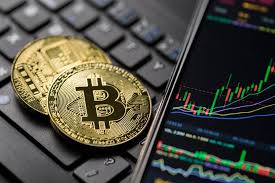
Understanding Trading Futures Crypto
In the ever-evolving landscape of financial markets, Trading Futures Crypto https://www.freedomsphoenix.com/Forum/Add?EdNo=001&Type=News&Info=227031 has emerged as a captivating arena for investors and traders alike. The ability to leverage cryptocurrency futures allows participants to speculate on the varying prices of digital assets without directly owning the underlying assets. This article will explore the intricacies of trading futures in the cryptocurrency space, delve into strategic approaches, and discuss the risks and rewards associated with this dynamic market.
What are Cryptocurrency Futures?
Cryptocurrency futures are contracts that oblige the buyer to purchase (or the seller to sell) a cryptocurrency at a predetermined price at a specified time in the future. These contracts allow traders to speculate on the future price movements of cryptocurrencies such as Bitcoin, Ethereum, and others. Unlike traditional futures contracts tied to commodities or financial instruments, crypto futures are traded on various exchanges and platforms dedicated to digital assets.
The key components of cryptocurrency futures include the contract size, expiration date, and settlement method. Traders can choose between cash-settled contracts, which are settled in fiat currency, or physically settled contracts, where the actual cryptocurrency is exchanged upon contract expiration.
Advantages of Trading Futures Crypto
One of the primary advantages of trading futures crypto is the ability to leverage positions. Futures trading often allows participants to control a significant amount of cryptocurrency with a relatively small initial capital outlay due to margin trading. This can amplify potential profits, but it also increases the risk of substantial losses.
Another advantage is the ability to hedge against adverse market movements. For instance, an investor holding a large amount of Bitcoin may enter into a futures contract to sell Bitcoin at a specific price, thereby protecting their investment from potential downturns in the market.
Moreover, the 24/7 nature of cryptocurrency markets allows traders to execute their strategies at any time, unlike traditional stock markets with limited trading hours. This flexibility appeals to a growing number of global investors.
Understanding Market Dynamics
In the realm of trading futures crypto, understanding market dynamics is pivotal. The cryptocurrency market is known for its volatility, with prices capable of experiencing dramatic fluctuations within short periods. Traders often utilize technical analysis, market indicators, and sentiment analysis to forecast price movements and make informed decisions.
1. **Technical Analysis:** Traders frequently use charts and price patterns to analyze historical performance and anticipate future price movements. Indicators such as moving averages, Relative Strength Index (RSI), and Bollinger Bands can aid in identifying potential entry and exit points.
2. **Market Sentiment:** Sentiment analysis involves evaluating the overall mood of the market. Traders may examine social media trends, news articles, and public discourse to gauge how market participants perceive specific cryptocurrencies.
3. **Fundamentals:** Although futures trading focuses on price speculation, it is essential to consider fundamental developments. Significant events such as regulatory announcements, technological advancements, and macroeconomic trends can influence market prices profoundly.

Strategies for Trading Futures Crypto
Successful trading in the cryptocurrency futures market requires well-defined strategies. Here are some popular approaches:
1. **Trend Following:** Traders identify and follow prevailing market trends. By entering positions aligned with the direction of the market, traders can capitalize on momentum. This strategy often involves setting stop-loss orders to manage risk.
2. **Scalping:** Scalping involves executing numerous short-term trades to capture small price movements. Scalpers utilize tight spreads and quick execution to profit from incremental changes, making this strategy suitable for highly liquid crypto markets.
3. **Arbitrage:** Arbitrage entails taking advantage of price discrepancies between different exchanges or markets. Traders can simultaneously buy a cryptocurrency at a lower price on one exchange and sell it at a higher price on another, profiting from the difference.
4. **Spread Trading:** Spread trading involves taking simultaneous long and short positions in related futures contracts. This strategy allows traders to benefit from price movements between the two assets while minimizing exposure to broader market risk.
Managing Risks in Futures Trading
While trading futures crypto offers attractive profit potential, it also comes with inherent risks. Proper risk management is crucial for long-term success in this volatile landscape. Here are some fundamental risk management strategies:
1. **Position Sizing:** Traders should determine the appropriate size of their positions based on their overall capital and risk tolerance. A common rule is to risk only a small percentage of the total account balance on a single trade.
2. **Stop-Loss Orders:** Implementing stop-loss orders can automatically close positions at predetermined price levels, limiting potential losses in adverse market conditions.
3. **Diversification:** Diversifying across different cryptocurrencies can help mitigate risks associated with the volatility of individual assets. Spreading investments across multiple futures contracts can reduce overall portfolio risk.
4. **Continuous Learning:** The cryptocurrency market is constantly changing. Traders should commit to ongoing education and adapt their strategies based on emerging trends, technologies, and market conditions.
Conclusion
Trading futures crypto can offer unique opportunities for investors seeking to navigate the complexities of the cryptocurrency market. With the right knowledge, strategies, and risk management practices, traders can potentially profit from the volatility and price movements of digital assets. As the landscape continues to evolve, staying informed and adaptable will be key to long-term success. Whether you’re a seasoned trader or just starting, understanding the dynamics of trading futures in the crypto space is essential for maximizing your investment potential.

